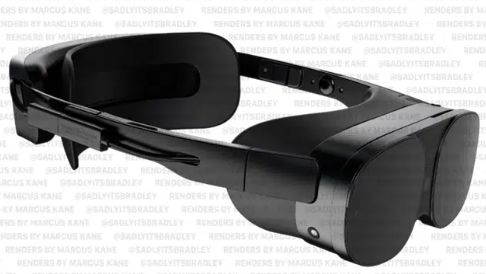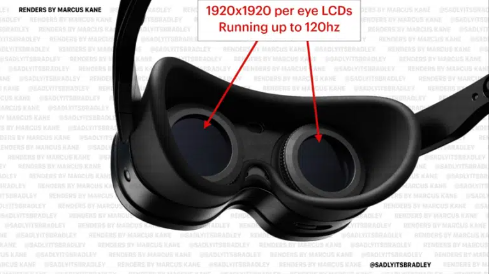Leak Reveals New HTC Vive Standalone Virtual Reality Headset With a Slim Modular Design
YouTuber and XR hardware analyst Brad Lynch (popularly known by the moniker SadlyItsBradley) has posted leaked renders of HTC Vive’s new standalone virtual reality headset. From the images, the headset has a slim and modular design.
This is the headset that HTC has been teasing on Twitter for the past month. The cryptic tweets with captions like “go small or go home” gave a slight hint of what the VR hardware company was up to. The tweets also hinted that this will be a consumer headset. On HTC’s Twitter profile, the bio has since changed to “Be a part of the next step in premium VR.”

Lynch says the leaked images he received are black and white but he didn’t share them as this would give away the source. Like with the previously leaked Quest Pro images, Lynch worked with the product designer Marcus Kane to generate a detailed 3D model of the renders.
The renders show the headset looks like HTC’s existing Vive Flow. However, it features rear padding and five cameras. Four of the cameras are positioned on the edges of the front and on the sides, likely for tracking functions. One of the cameras is located at the center which likely provides the color passthrough function. From the renders, it appears the headset has the same configuration as the Meta Quest Pro and Pico 4.
HTC Vive’s new standalone virtual reality headset features the same tracked controllers found in the Vive Focus 3. The current Vive Flow relies either on your phone or a controller that is sold separately and which serves as an untracked rotational laser pointer, which suggests the new headset could be focused on gaming use cases.
A notable feature of the headset is its modular design. Its rear padding, which contains the battery, is detachable, enabling you to use the headset in the “glasses mode” whereby it will be powered by an external USB power source or where it acts as a PC VR headset. In this mode, the headset would also be perfectly suited for media watching either in bed or when lying on your back on a couch.

It appears that the new HTC Vive standalone VR headset uses the same pancake lenses that the company used in Vive Flow. Vive Flow’s field of view is slightly smaller than that of Meta Quest 2. Lynch says the LCD panel resolution is now 1920×1920 per eye. This is more than that of any Meta headset although it is still lower than that of Pico 4, Vive Focus 3, or Vive Pro 2.
Lynch, citing “many sources,” says that the headset is set to launch early next year. The headset will be powered by the same Snapdragon XR2 Gen 1 that is also used Pico 4 and Quest 2.
Lynch, also citing his sources, initially suggested that the headset will retail at less than $1,000 before later retracting and tweeting that the suggested price was incorrect.
https://virtualrealitytimes.com/2022/11/16/leak-reveals-new-htc-vive-standalone-virtual-reality-headset-with-a-slim-modular-design/https://virtualrealitytimes.com/wp-content/uploads/2022/12/HTC-Vive-Flowcus.pnghttps://virtualrealitytimes.com/wp-content/uploads/2022/12/HTC-Vive-Flowcus-150x90.pngTechnologyYouTuber and XR hardware analyst Brad Lynch (popularly known by the moniker SadlyItsBradley) has posted leaked renders of HTC Vive’s new standalone virtual reality headset. From the images, the headset has a slim and modular design. This is the headset that HTC has been teasing on Twitter for the past...Rob GrantRob Grant[email protected]AuthorVirtual Reality Times - Metaverse & VR

